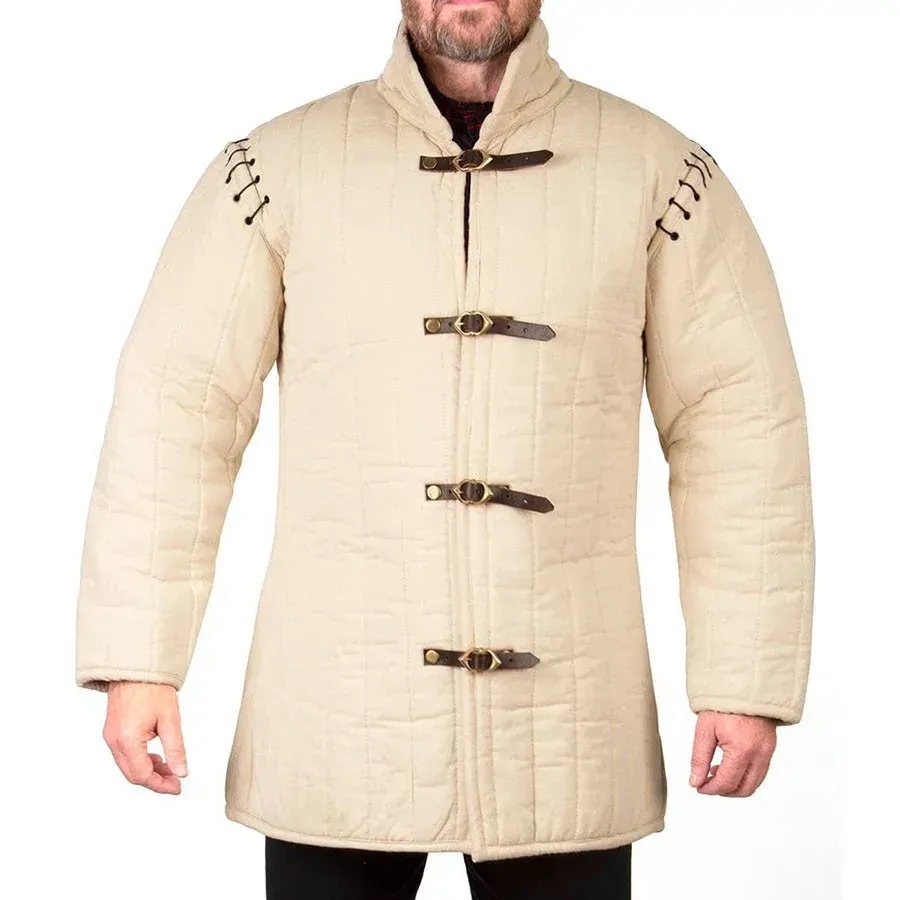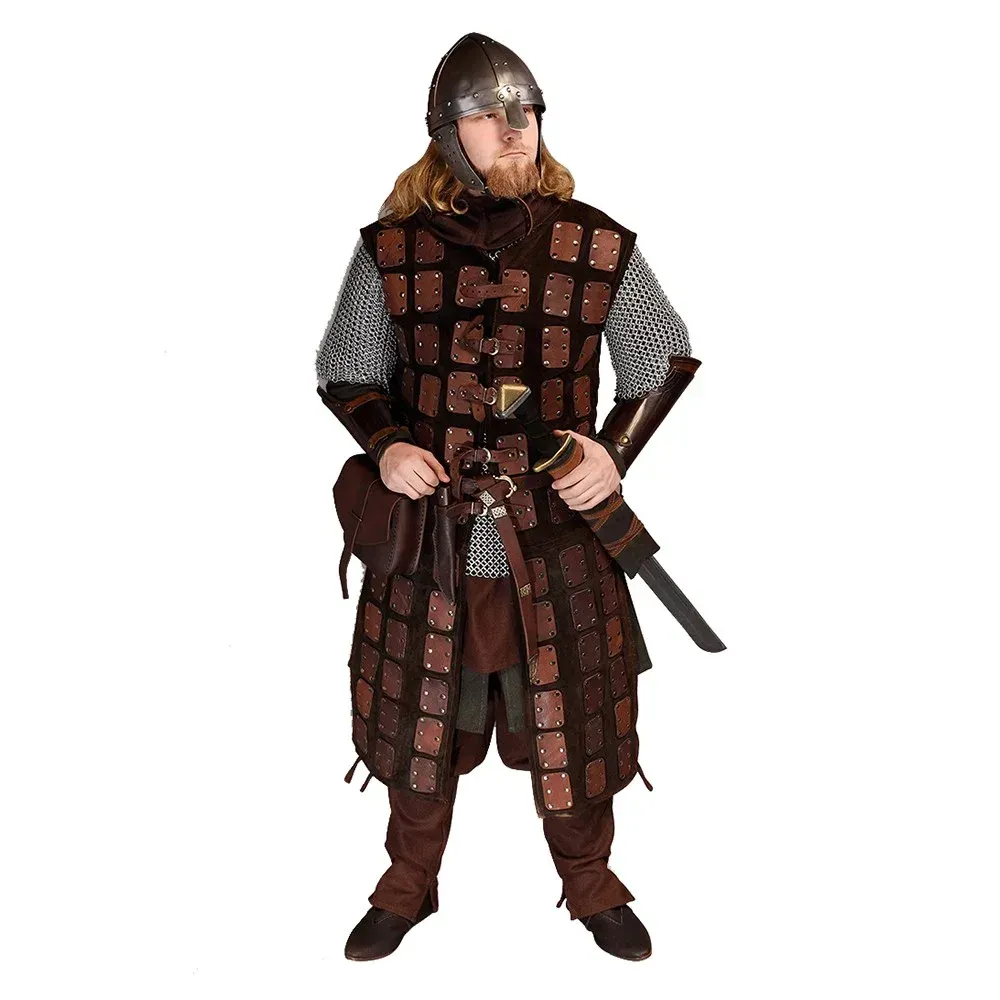Gambeson Vs. Brigandine
The comparison between the **gambeson** and the **brigandine** allows us to delve into the fascinating medieval era, where protection on the battlefield was crucial. These two pieces of armor stood out for their design and efficiency, adapting to the needs of the warriors of their time. Through this analysis, we discover their differences and similarities, as well as the historical context in which they were used.
Gambeson: Padded Protection
The **gambeson** is a padded garment that dates from the 10th century to the 18th. This soft armor functioned to provide an additional layer of protection to the medieval soldier.
- Padded Structure: Made of linen or cotton, and often filled with scraps or horsehair, the gambeson acted as a protective barrier against scrapes and cuts by preventing direct contact with metal pieces.
- Variants: There were two types: one designed to be worn under other armors, and another that functioned independently, the latter being thicker and made with more durable materials like leather or canvas.
- Military Popularity: It was especially appreciated by common soldiers who could not afford more sophisticated armor. It gained significant relevance during the 11th century by enabling the independent use of chainmail.

Brigandine: Flexibility and Style
The **brigandine** appeared later, in the mid-15th century, and was used until the 16th century. This armor combined functionality and aesthetics, being a key element in the military attire of the time.
- Design: It was made using fabric or leather as a base, with metal plates riveted inside. This design provided great flexibility and freedom of movement.
- Construction Elements: The smaller metal plates, strategically placed, allowed for superior mobility, being lighter than other heavy armors.
- Use and Acceptance: It was frequently worn over a gambeson and chainmail, making it popular among elite soldiers such as archers and knights.

Comparison between Gambeson and Brigandine
Both armors played crucial roles, but they have differences in design, utility, and social preference.
| Characteristic | Gambeson | Brigandine |
|---|---|---|
| Structure | Padded with linen or cotton | Fabric or leather with metal plates |
| Flexibility | Low, due to padding | High, thanks to movable plates |
| Use | Under other armors or alone | Over gambeson and chainmail |
| Material | Linen, cotton, scraps/horsehair | Fabric, leather, metal plates |
| Period of Use | 10th century to 18th | 15th century to 16th |
| Popularity | Common soldiers | Nobles and elite |
The **gambeson** stood out for its accessibility and effectiveness as a base for other armors, while the **brigandine** offered better mobility and visual appeal, becoming a status symbol. The choice between these two pieces would have largely depended on social rank and specific military function, highlighting the ongoing evolution of medieval armor in response to the changing needs of the battlefield.
















